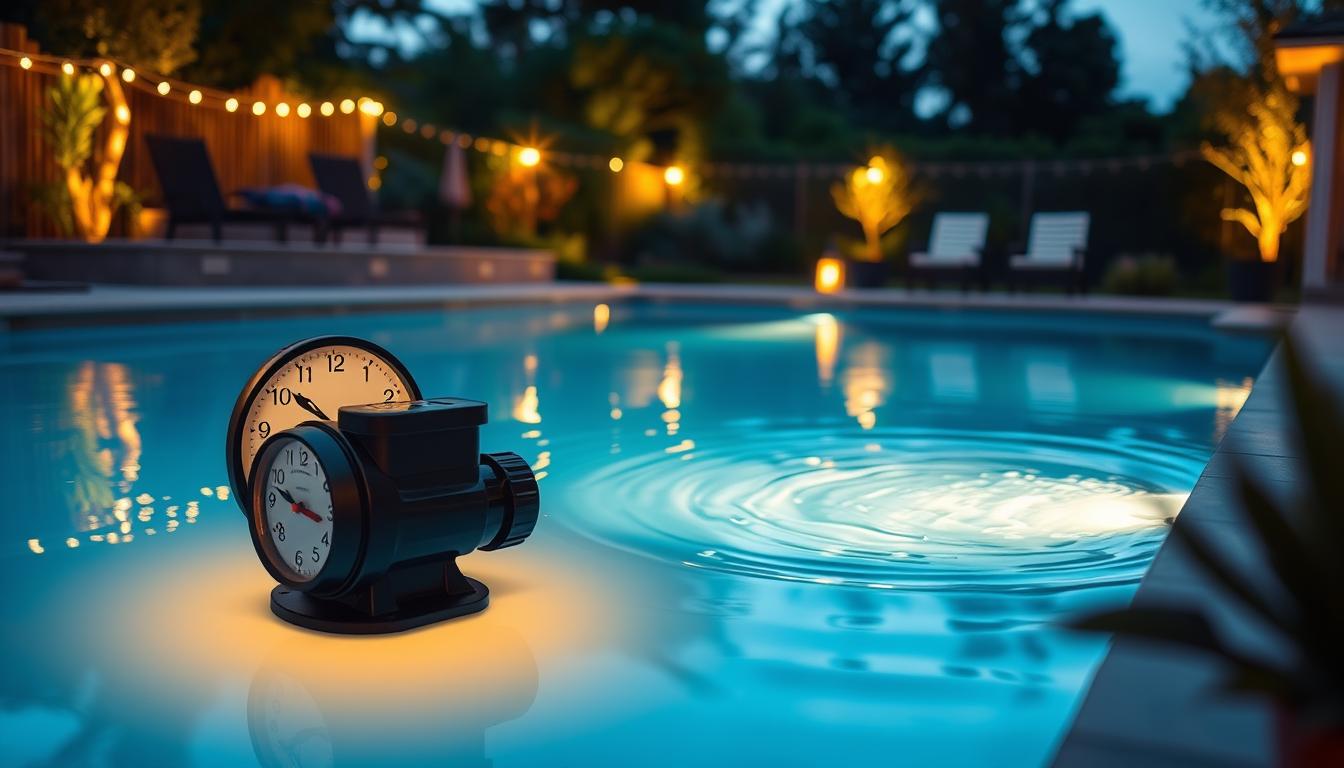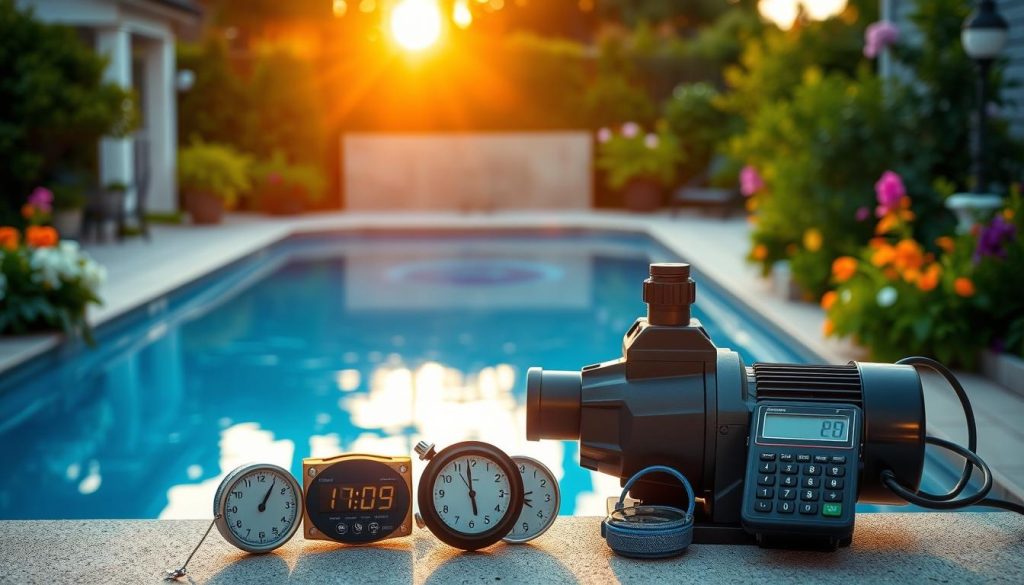
Running your pool pump at the right times is crucial for a clean, clear pool. A well-timed pump schedule keeps your pool inviting and saves energy costs. Let’s explore the best times to run your pool pump.
We’ll also share tips for creating an energy-efficient pool pump timing schedule. This approach will help maintain your pool’s top condition while reducing expenses.
In some areas, nighttime electricity rates can be 75% lower than peak charges. Running your pump during these off-peak hours can greatly reduce maintenance costs. It’s also best to add chemicals when the water is circulating.
Pool shock works better at night. The sun can burn it off during hot daytime hours. This timing ensures even distribution of chemicals throughout your pool.
To save money and maintain proper circulation, break up pump run times. Aim for several short periods totaling about eight hours daily. A pump timer can make this process easier.
If your pool sees constant use, you may need longer pump times. In this case, run the pump for up to eight consecutive hours daily. Keep a close eye on water clarity and chemical balance.
Factors That Affect Pool Pump Run Time
Understanding factors that influence pool pump hours is crucial. It helps optimize electricity usage and reduce costs. Let’s explore these elements to make informed decisions about pool pump run time.
Pool Volume and Size
Pool size and water volume greatly impact pump run time. Larger pools need longer pumping cycles for proper circulation. The bigger the pool, the more time the pump needs to run.
Pump Size and Flow Rate
Pump size and flow rate are crucial in determining run time. A higher flow rate can circulate water more quickly. It’s important to choose an appropriate pump size for your pool’s volume.
| Pump Size (HP) | Flow Rate (GPM) | Suitable Pool Volume (Gallons) |
|---|---|---|
| 0.5 | 40-50 | Up to 15,000 |
| 0.75 | 50-60 | 15,000-25,000 |
| 1.0 | 60-70 | 25,000-35,000 |
| 1.5 | 70-80 | 35,000-45,000 |
| 2.0 | 80-90 | 45,000+ |
Pool Usage and Environment
Pool use frequency and surroundings affect required pump operating hours. Heavily used pools or those in areas with abundant foliage need more pump time. This helps combat increased debris and contaminants.
According to industry experts, pools in areas with heavy tree coverage or frequent windstorms may require up to 30% more pump run time to maintain optimal water quality.
Consider these factors when adjusting pool pump operating hours. This approach can reduce costs while maintaining a clean swimming environment. Balance efficiency with water quality for the best results.
Calculating the Optimal Pool Pump Run Time
Calculating the optimal pool pump run time is crucial for clean water and energy efficiency. We’ll explore how to balance effective filtration and pool pump energy savings.

Determining Pool Volume
First, find out your pool’s volume from the installer or manufacturer. In Australia and New Zealand, backyard pools typically hold 40,000 to 100,000 liters.
Understanding Turnover Rate
Turnover rate is how long it takes to circulate all pool water. Residential pools should aim for one complete turnover in 4-6 hours. Add an hour of filtration for every 10 degrees above 15°C.
Calculating Pump Flow Rate
To find the pump flow rate, divide pool volume by turnover rate in hours. Then divide by 60 for liters per minute.
Example calculation: For a 70,000-liter pool with a 6-hour turnover, the pump should flow 195 liters per minute (70,000 ÷ 6 ÷ 60).
Determining Daily Run Time
Multiply pump flow rate by 60 for liters per hour. Divide total pool volume by this number.
Using our example, a 195 liters per minute pump needs to run 6 hours daily (70,000 ÷ (195 × 60)).
The pump should run for one complete turnover cycle daily. You can split this time into non-consecutive periods throughout the day.
Running the pump during off-peak hours can reduce electricity costs. This contributes to overall pool pump energy savings.
| Pool Volume (Liters) | Turnover Rate (Hours) | Pump Flow Rate (Liters/Minute) | Daily Run Time (Hours) |
|---|---|---|---|
| 40,000 | 4 | 167 | 4.0 |
| 70,000 | 6 | 195 | 6.0 |
| 100,000 | 5 | 333 | 5.0 |
These steps help determine the optimal pool pump hours for your specific pool. You’ll ensure effective filtration while minimizing energy use.
Best Time of Day to Run Pool Pump
Running your pool pump at the right time is key for a clean, healthy pool. In summer, run it for 12-16 hours daily to fight algae and dirt. Run the pump during the hottest part of the day to combat algae growth.
Consider your local electricity rates when planning pump run times. Split the run time between day and night if daytime rates are higher. Run the pump more before and during pool parties for better cleanliness.
Smaller, high-efficiency pumps can clean pools faster than older models. They often work in a third to half the time of larger pumps. This makes them great for saving energy without sacrificing water quality.







